Dumbbell Sumo Squat: Benefits, Muscles Worked, and More
Upon technical examination, the dumbbell sumo squat can be identified as a free weight closed chain compound exercise involving significant dynamic movement at the hip and knee joints.
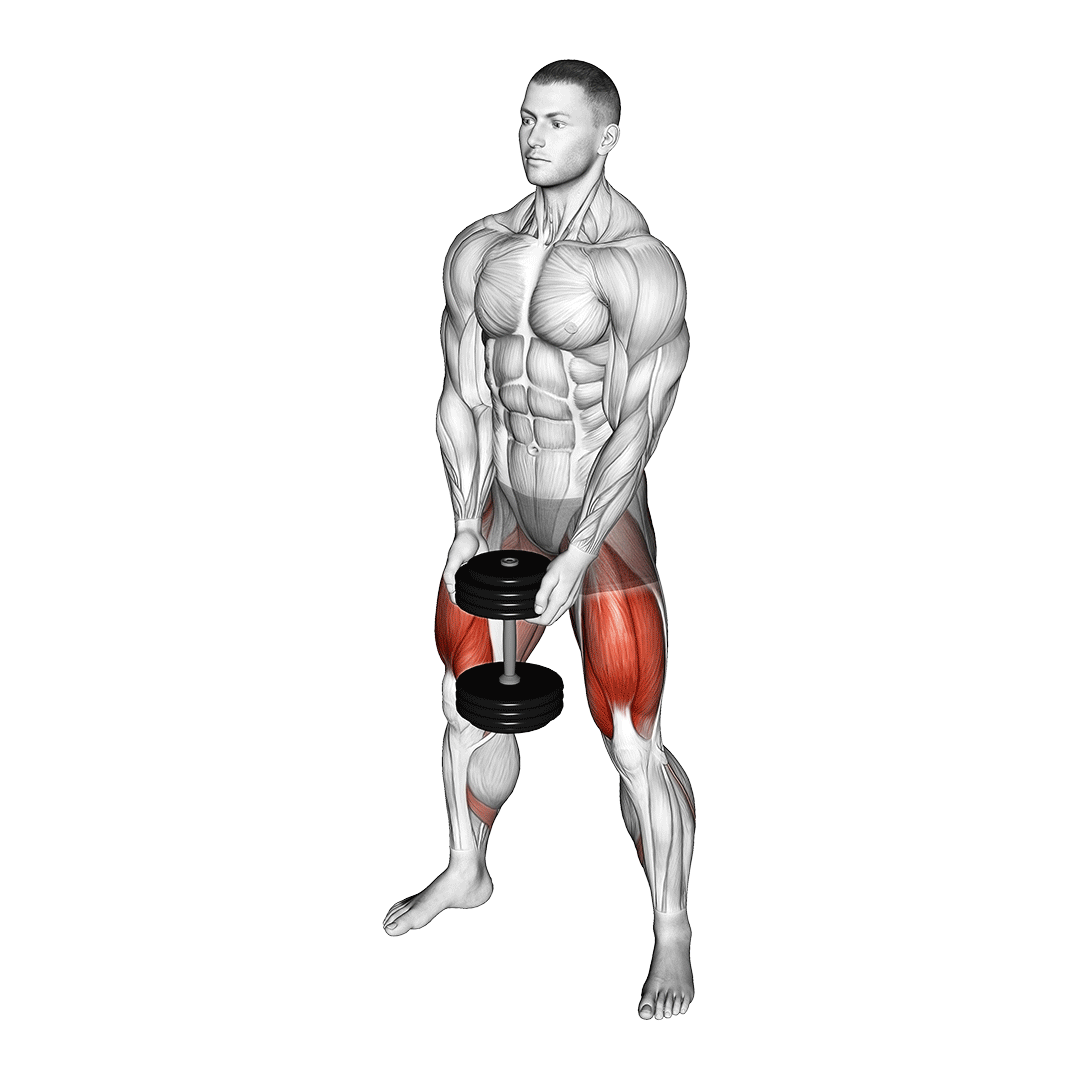
Although there are many ways to load the sumo squat, it is suggested that lifters make use of a goblet grip or that they otherwise grip the dumbbell from one end between their legs for greater stability.
When structuring a training program, the dumbbell sumo squat is either performed as the primary compound movement of a workout session, or otherwise as a secondary compound movement to even heavier lower body exercises.
In comparison to conventional squats, the sumo squat features a wider and more outward stance - necessitating a more vertical trunk orientation and somewhat less hip flexion.
In addition, the total range of motion is somewhat shorter, allowing for greater loading and volume at the expense of posterior chain muscle time under tension. Furthermore, the sumo squat will require comparatively greater hamstring, hip and ankle mobility to perform in a stable manner.
How to Do a Dumbbell Sumo Squat
To perform a repetition of the dumbbell sumo squat, the lifter will begin by first hoisting a dumbbell up to a secure position in their grip. If using two dumbbells, they should either be racked atop the shoulders or held in a pronated grip at the front of the trunk, elbows loose and extended.
Weight now held securely, the lifter adopts a sumo stance by planting their heels approximately twice the width of their shoulders apart, angling the toes outwards in alignment with the direction of the knees.
Throughout the set, the chest must remain upright with the core braced and the spine kept neutral, head preferably also facing forwards and stacked over the trunk.
Ensuring their stance is kept tight, the lifter then pushes their hips back by several inches as they descend downwards - summarily also bending at the knees as the hips dip downwards.
The lifter continues this descent until their thighs are parallel to the floor, where they then squeeze their quadriceps and drive through their heels, rising back into their original upright position.
Once the knees are fully extended once more, the repetition is considered to be complete.
Sets and Reps Recommendation:
Due to the sheer number and size of the muscles used during a dumbbell sumo squat, lifters may wish to limit volume while increasing how much weight they are lifting.
3-5 sets of 8-16 repetitions at a moderate to heavy load should suffice for both strength and muscle mass development.
What Muscles are Worked by Dumbbell Sumo Squats?
Dumbbell sumo squats are a compound movement, meaning that they make use of multiple muscle groups throughout each repetition. However, not all of these muscles benefit from the exercise to the same degree.
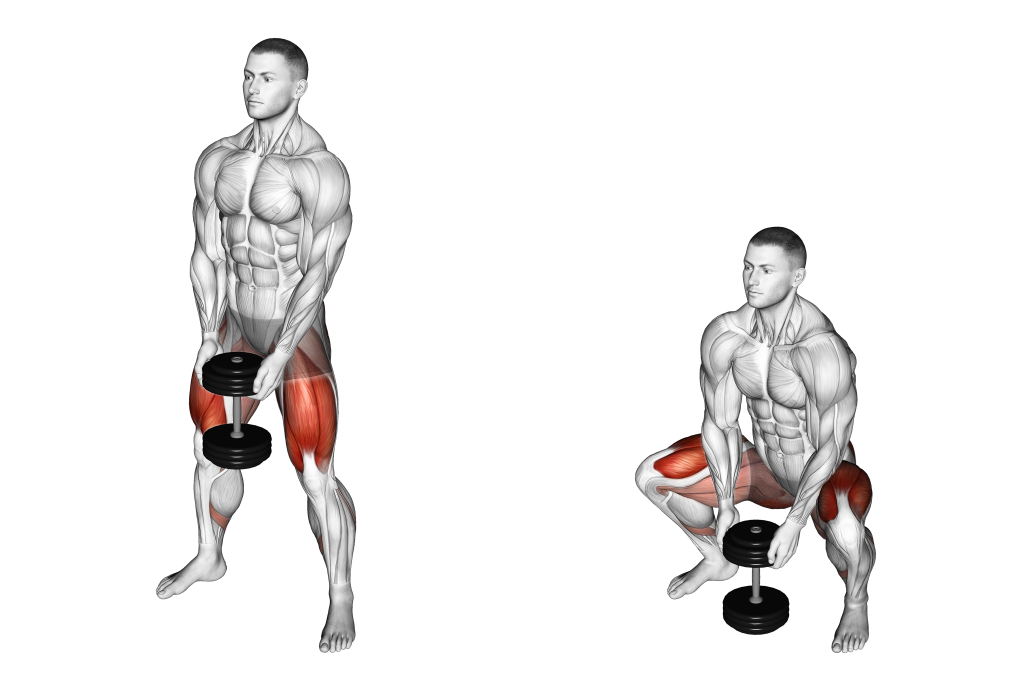
To properly identify which muscles develop most from dumbbell sumo squats, they will need to be classified according to their role within the movement.
Those exhibiting intense dynamic contraction are called “mobilizer” or “mover” muscles, whereas muscles contracting in place to a lesser intensity are called “stabilizer” muscles.
Primary and Secondary Mobilizer Muscles
The primary muscle group used during sumo squats is the quadriceps femoris, where it acts to extend the knee while in a significantly lengthened position.
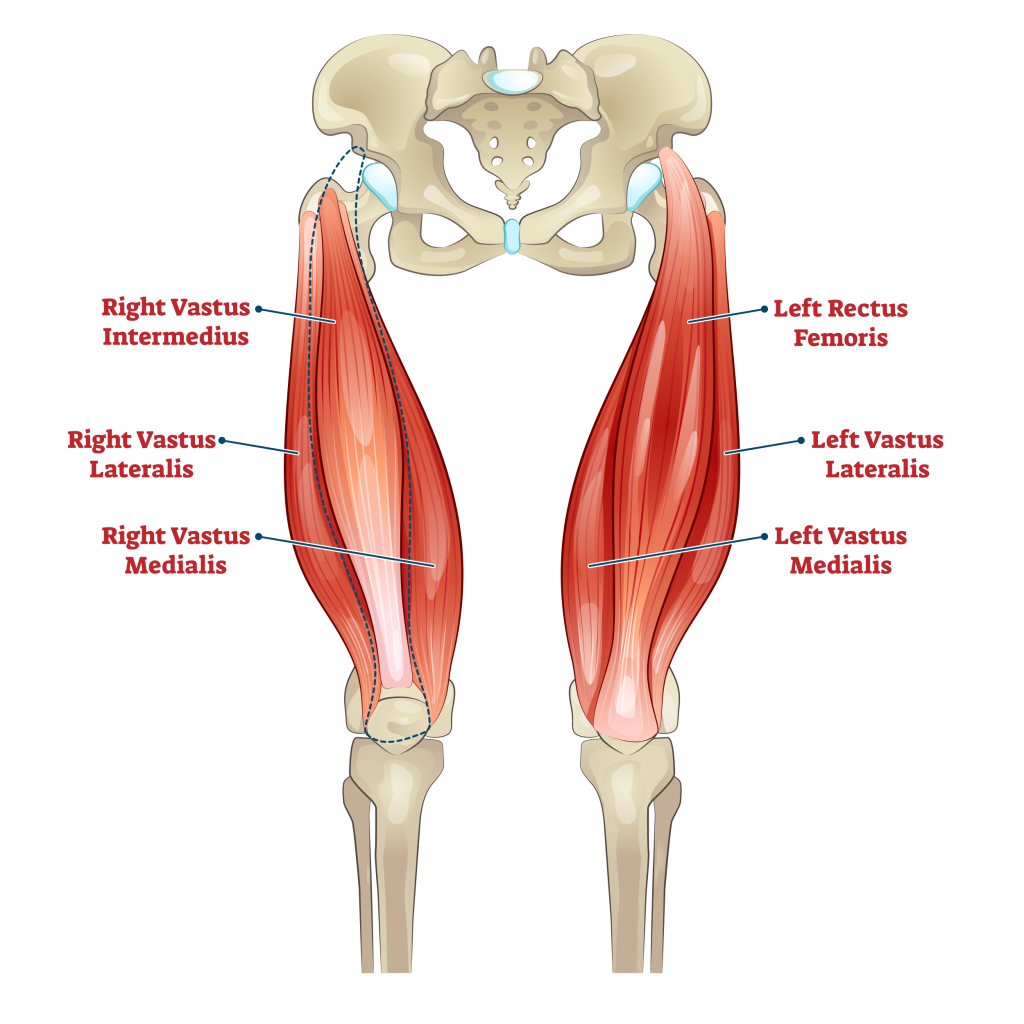
Alongside the quads are the secondary mobilizers of the glutes and hamstrings - of which are used to a somewhat lesser extent as less hip flexion/extension and knee flexion are utilized during a sumo squat.
Stabilizer Muscles
Apart from the aforementioned mobilizer muscles, dumbbell sumo squats will also work the muscles of the core, erector spinae included. These muscles isometrically work to stabilize the entire body, maintaining proper form and helping to prevent injury.
If holding the dumbbells at the front rack or shoulder position, the deltoids will also be contracted to help stabilize the upper trunk as well.
Common Dumbbell Sumo Squat Mistakes to Avoid
Though the majority of intermediate-level lifters will have already corrected the following mistakes, it is still important to look out for them so as to avoid injury and better develop the lower body.
Internal Leg Rotation/Going Knock-Kneed
Lifters with poor mobility or weak adductors may find that the wide stance of a sumo squat causes their knees to cave in as they perform the exercise.
Apart from being generally bad for muscular recruitment, allowing the legs to rotate towards each other will also create far greater strain within the knee joint, increasing the risk of tendinopathy and other forms of chronic injury.
Lifters may employ a variety of strategies to help mitigate this particular mistake. The most effective will be performing hip adductor isolation exercises, swapping out their footwear, stretching the hip muscles and avoiding leaning the trunk forwards.
However, depending on the underlying issue, lifters may also need to strengthen their posterior chain muscles or to adopt a more outward toe angle so as to prevent subconsciously rotating the legs inwards during the concentric phase.
Ankle Eversion
Like internal leg rotation, allowing the ankles to rotate towards one another will also greatly increase the risk of injury - an issue particularly common with wide stance exercises like the sumo squat.
However, unlike with the aforementioned knock-knee issue, ankle eversion is often caused by poor footwear or that the lifter’s stance is simply too wide for their particular proportions.
One less common culprit is also poor mobility of the ankles, although this will often manifest with the heels also rising off the ground as well.
To correct ankle eversion, lifters should experiment with a slightly narrower stance, squatting barefoot and by stretching out their shin and ankle tissue.
Leaning the Trunk Forwards
Unlike with conventional back squats, sumo squats are meant to involve a more vertical torso due to the far wider stance involved.
Leaning the trunk forwards can increase pressure on the knees even further, as well as lead to a greater risk of lower back and spine injuries.
A good way to correct forward trunk lean with sumo squats is to practice performing the movement with the back against a wall - sliding down it until reaching full depth. This is generally the correct movement pattern one wants to adopt, especially if the dumbbell is held between the legs in both hands.
Rounding the Back or Lower Back Flexion
Even if the trunk is relatively flat and vertical, the lower back may be out of neutral alignment - leading to increased strain along the spine and a far greater risk of injury.
Injuries to the lower back (or thoracic and lumbar sections of spine) are among the most commonly associated with heavy squats, regardless of variation.
In most cases, this mistake is a result of poor core contraction or that the lifter is simply unfamiliar with maintaining proper lower back neutrality.
Properly bracing the core and familiarizing oneself with the feeling of having a neutral spine is critical to performing sumo squats safely.
Poor Range of Motion
Although the sumo squat’s range of motion is already comparatively short, lifters should nonetheless still aim to attain a full range with each repetition.
Failing to complete a full range of motion can lead to poor muscular development (especially with the posterior muscles) and the creation of issues like sticking points, knee tendinopathy or general lower body instability.
Each repetition should begin and end with the knees extended and the hips aligned over the femurs, whereas the deepest portion of the rep must involve the thighs parallel to the floor at the least.
Squatting to the same depth as with back squats may be difficult for some lifters - of which is entirely fine, so long as they are reaching a sufficient depth for posterior chain engagement.
Excessively Rapid Tempo
As is the case with any exercise, the dumbbell sumo squat is most effective when performed in a slow and controlled manner - especially during the eccentric phase.
Rapidly descending into depth, “dive-bombing” or otherwise performing the exercise rapidly and with little tension in the muscles will lead to suboptimal muscular development, and an overall greater risk of injuries occurring.
Lifters should aim to descend into depth over the course of several seconds, whereas the latter concentric phase should last up to an entire second, if not somewhat longer.
Dumbbell Sumo Squat Alternatives and Variations
If the dumbbell sumo squat isn’t exactly what you need out of your training, try these similar alternative exercises.
Dumbbell Sumo Deadlifts
The dumbbell sumo deadlift is essentially a dumbbell sumo squat with significantly greater hip hinging and more emphasis on the posterior chain of muscles.
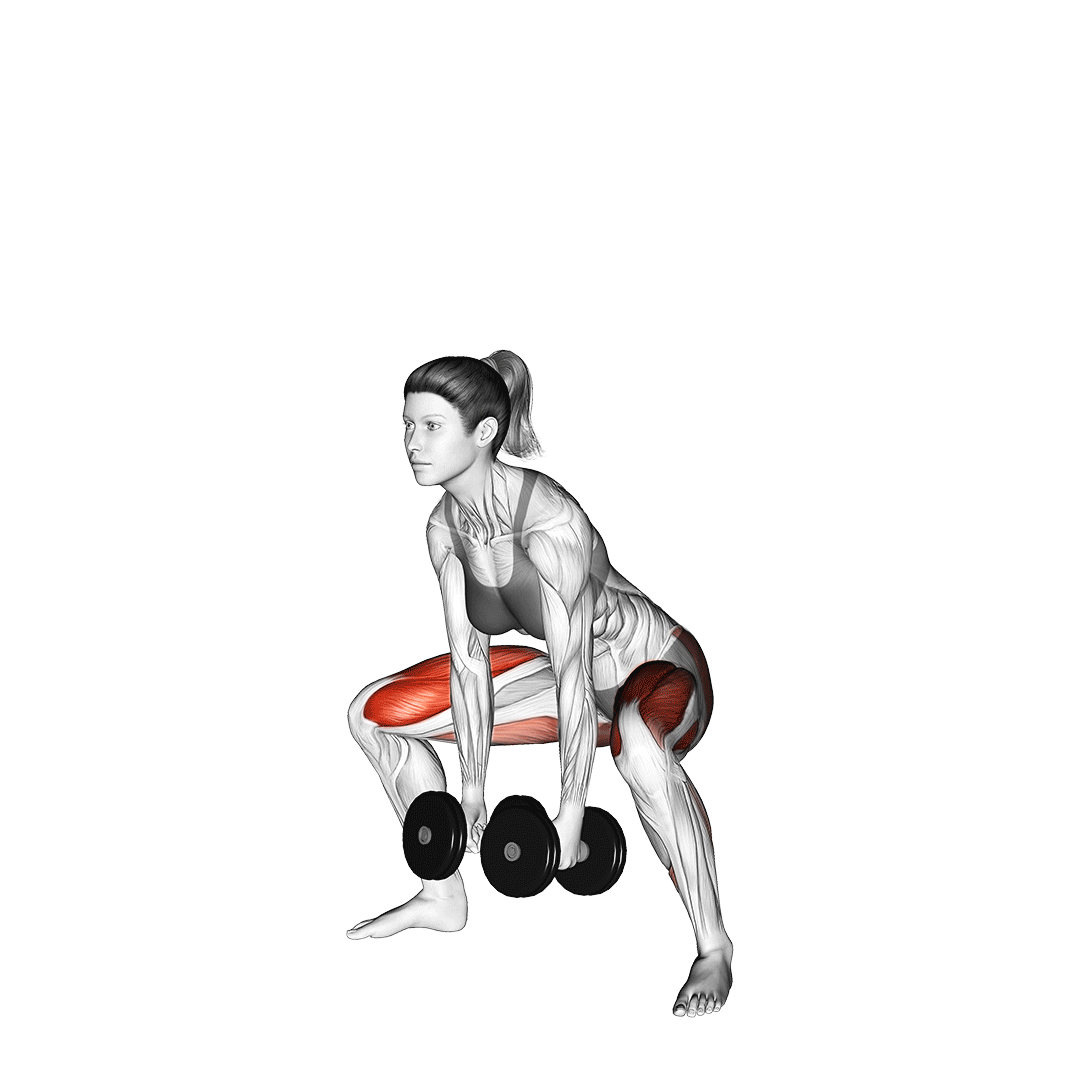
The two share a similar name as they both require a wide and outward-facing stance, leading to greater adductor and quadriceps recruitment alongside a shorter range of motion.
Ideally, a proper training routine will include some variation of deadlifts and squats, rather than just one or the other.
Because the dumbbell sumo squat is somewhat inefficient as a posterior chain exercise, performing it alongside a dumbbell deadlift is synergistically perfect.
Front Squats
Front squats are similar to sumo squats in terms of their benefits - those specifically being reduced lower back strain, greater quadriceps emphasis and task-specific training stimulus.
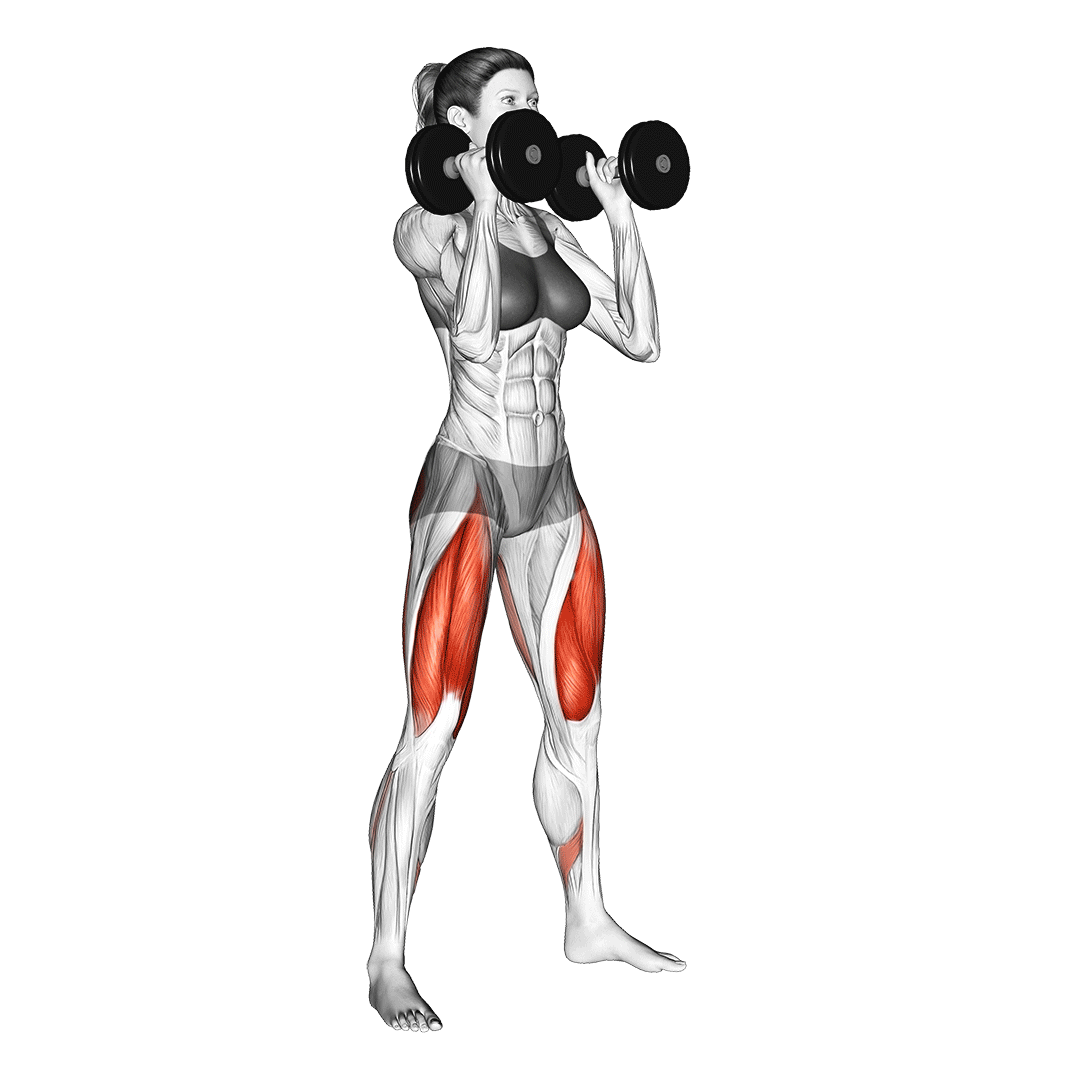
However, unlike sumo squats, front squats do not feature a limited range of motion and do not otherwise require significant hip, ankle or knee mobility beyond that possessed by the average weightlifter.
Despite these comparative advantages, they nonetheless also offer much the same advantages of sumo squats.
Dumbbell Goblet Squats
The dumbbell goblet squat is essentially a less vertical and more narrow form of dumbbell sumo squat.
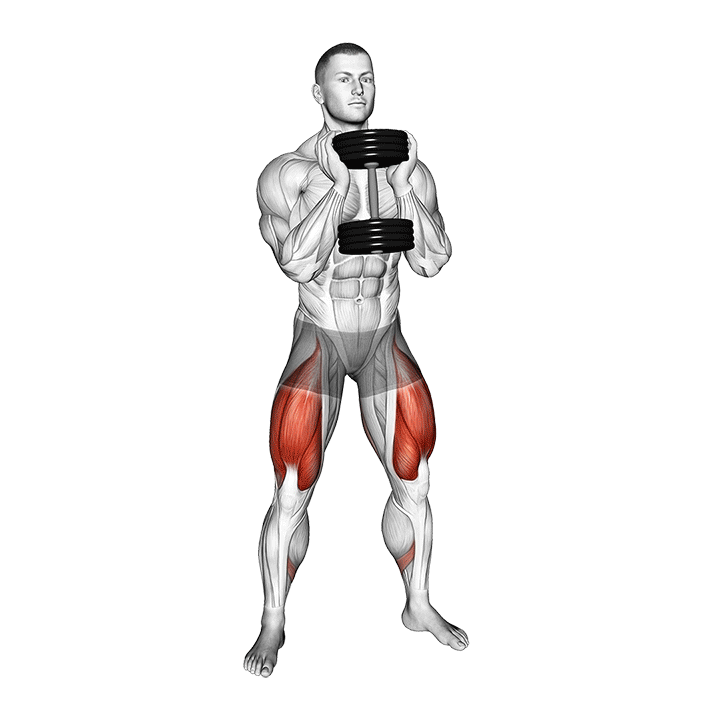
As is clued in by its name, dumbbell goblet squats feature the lifter holding the dumbbell in a “goblet” style between both palms, usually at around chest height, rather than the less involved method seen with dumbbell sumo squats.
Apart from a larger range of motion and somewhat greater allowance for trunk flexion, dumbbell goblet squats are also better for targeting the posterior chain simply because it is a more advantageous position for glute and hamstring contraction.
Frequently Asked Questions (FAQ)
Which is Better, Sumo Squats or Regular Squats?
For overall lower body hypertrophy and strength development, the regular squat is somewhat superior as it has the most generalized distribution of load and a somewhat larger range of motion.
However, the sumo squat does have its own time in the spotlight as well - especially in cases where the adductor or quadriceps muscles are underdeveloped, or if the lifter dislikes the comparatively narrower stance of conventional squats.
Are Sumo Squats Better for the Knees?
Sumo squats are only as bad for your knees as they allow them to be.
Although they do pressure the knees somewhat more than regular squats - a proper warm-up, following correct technique and lifting a reasonable amount of weight will largely mitigate any risk of knee injury present.
Should You Do Sumo Squats Everyday?
Not at all. Performing any heavy exercise - especially compound ones like sumo squats - will create microscopic tears in the soft tissues of the body.
A sufficient length of rest time must be allocated between training sessions of the same muscle groups, or they will not be able to recover otherwise. Failing to give your body enough time to recover will not only lead to injuries and discomfort, but also poor development as a whole.
Aim to perform sumo squats at least once every 24-48 hours, ensuring no other exercises target the same muscles within this period.
References
1. Slater, Lindsay V.; Hart, Joseph M.. Muscle Activation Patterns During Different Squat Techniques. Journal of Strength and Conditioning Research 31(3):p 667-676, March 2017. | DOI: 10.1519/JSC.0000000000001323
2. Coratella, Giuseppe, Gianpaolo Tornatore, Francesca Caccavale, Stefano Longo, Fabio Esposito, and Emiliano Cè. 2021. "The Activation of Gluteal, Thigh, and Lower Back Muscles in Different Squat Variations Performed by Competitive Bodybuilders: Implications for Resistance Training" International Journal of Environmental Research and Public Health 18, no. 2: 772. https://doi.org/10.3390/ijerph18020772

